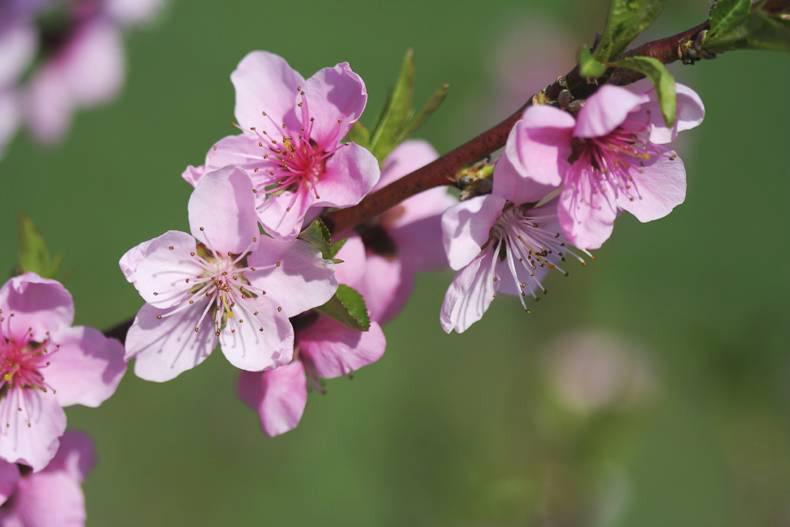There are relatively few plants that flower in winter, and best use should be made of them. However, the winter heathers were over-used, sometimes making whole beds of winter and spring heathers. These beds looked great for a few months early in the year, but they looked very dull from late spring to the flowering winter, out of flower and with rather shapeless foliage all summer.
If the bed was in a prominent position, it really stood out for the wrong reasons. Heathers have often been used to cover a bank, planting over the whole area. This rarely works, as it looks very tired without other plants to carry the show.
There are many different kinds of winter and spring heathers, some flowering in December, others beginning in January and February. Many kinds of plants have been flowering early this year, out of season, but these heathers do it every year.
The best way to use heathers in the garden is to plant individual plants, or small groups of plants, in strategic positions, where they will have most impact. Place heathers towards the front of beds and borders, near paved areas, and at the top of low retaining walls, locations where their colour will be visible. Individual plants, repeated if desired, can be used on a rock garden. Heathers look well with stones and soften the appearance of large rocks as well as gravel areas. They are very effective used in winter containers with pansies or cyclamen, and can be planted out later in a flower bed or border.
Good varieties of winter heather include the early flowering ‘December Red’ and ‘King George’, with deep-pink flowers. Good spring-flowering kinds include ‘Myretoun Ruby’, which has pink flowers that darken to crimson. ‘Vivelli’ has bronze foliage and pink flowers that darken. ‘Springwood White’ and Springwood Pink’ are low-growing, spreading and tend to get a bit bare in the middle.
This happens to some varieties, and a scatter of sand mixed with fine rotted compost or old potting compost helps. Some have bronze foliage or yellow foliage and are grown for these colours, such as ‘Foxhollow’, which turns orange-red in winter.
Some kinds reach about knee-height and are more upright than those mentioned. The larger sorts are the best choice for spring display, because they are big enough to make an impact even as a single plant and certainly as a small group.
‘Kramer’s Red’ has bronze foliage and deep-pink flowers. ‘Jenny Porter’ has white flowers and cream-tipped shoots in spring. ‘Silberschmelze’ has white flowers, foliage tinged red in winter, and ‘Darley Dale’ has light pink flowers that darken.
There are taller varieties, reaching about 50 centimetres, such as ‘Irish Dusk’, which flowers pink from early winter to late spring, the lovely white form ‘WT Rackliff’, and ‘Brightness’, with purplish dark foliage in winter and pink spring flowers. These are short forms of the Irish heath, which is a tall species.
The Mediterranean native tree heath is also occasionally seen in gardens in mild areas as a medium shrub to two metres covered with white flowers in spring.
Mostly, the winter heathers are hardy, well able to withstand harsh weather. These kinds grow well in limy soil and, unlike the autumn heathers, they do not need acidic soil.
A lovely effect can be created when these heathers are associated with some spring bulbs, such as crocuses, small daffodil varieties, scillas and chionodoxas. Associating them with grassy plants, such as brown sedges, is also very effective. They need full, open sunshine to do well.
